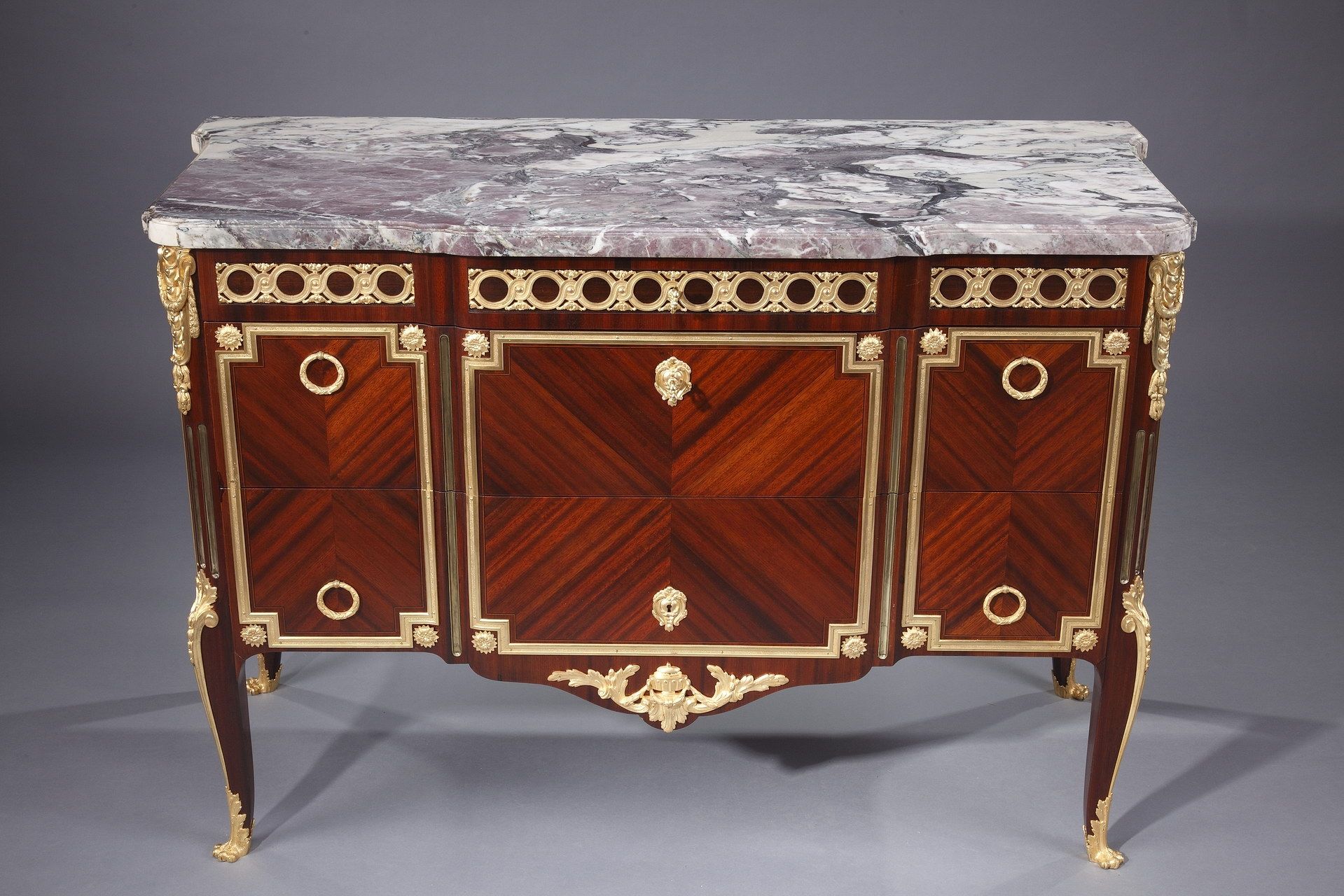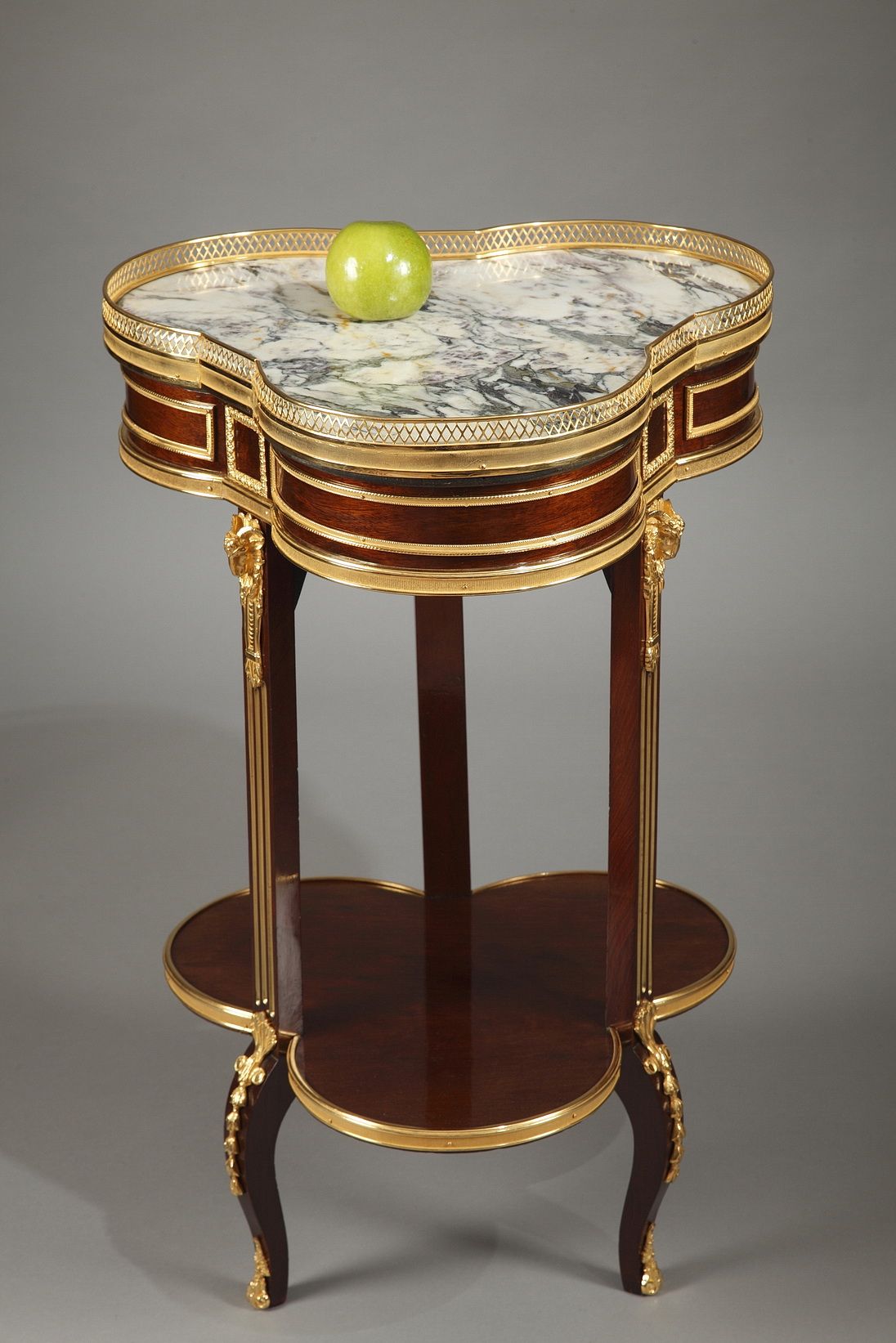The Transition style (1765-1775)
13.08.14
The term Transition refers to the stylistic evolution which, in the second half of the reign of Louis XV and at the very beginning of the reign of Louis XVI, is characterized by the abandonment of the curves and movement of the Rococo in favor of straight, clean lines and symmetry.
 Transition style chest of drawers by Mercier Frères
Transition style chest of drawers by Mercier Frères
Initially, the specific ornamental attributes of the Louis XV style were juxtaposed with the neoclassical ones of the so-called "Greek style". Then, only the attributes inspired by Antiquity were retained: this was the advent of the Louis XVI style of neoclassical inspiration.
To prepare her brother, Abel Poisson, Marquis de Marigny, for his future position as Director of the King's Buildings and Manufactures, the Marquise de Pompadour, Louis XV's favorite, sent him to Italy. He was accompanied on this journey by Abbé Blanc, an art lover and critic of Rococo, Charles-Nicolas Cochin, an engraver, and the architect Jacques-Germain Soufflot. Visits to Italy's major ancient sites, including the recently discovered Herculaneum (from 1738) and Pompeii (1748), thrilled the travelers who, upon their return to Paris in the spring of 1751, advocated a return to the "Greek style," which would later be known as Neoclassical.
The furniture
The "Greek style" was quickly adopted by ornamentalists, including Jean-Charles Delafosse and Jean-François de Neufforge, a Flemish architect who authored a book of antique-style furniture designs.
It gained momentum from 1755 and continued until 1770. It influenced some carpenters and cabinetmakers who, without completely abandoning the motifs of the Louis XV style, drew inspiration from these models to offer hybrid lines combining curves and straight lines, characteristic of the Transition style.
The return to right-hand lines and symmetry is achieved with lightness and elegance. After the extraordinary creativity of the Louis XV style in furniture design, the Transition style modifies the lines of existing furniture but does not introduce entirely new pieces. Secretaries, chests of drawers, and desks feature straight frames with chamfered corners, a form that foreshadows the Louis XVI style, while still often resting on cabriole legs reminiscent of Louis XV. The starkness of the lines is softened by chamfered corners, rounded edges, and projections that prevent rigidity.
 Transition style folding table, 19th century
Transition style folding table, 19th century
Small furniture is still in vogue, especially bonheur-du-jour desks, kidney-shaped tables and small dressing tables.
Ornamentation
While the forms of the furniture did not undergo major changes, the ornamentation evolved considerably. In reaction to the Rococo style , the decorative vocabulary of classical architecture was revived. On both the aprons of tables and the uprights of secretaries, the Greek style manifested itself through ornaments recently discovered on excavated temples: friezes of posts, interlacing patterns, Greek key patterns, triglyphs and metopes, rosettes, palmettes, piastres, pearls, garlands, and heart-shaped motifs.
Large neoclassical style column
Garlands of laurel treated in gilt bronze enliven the chests of drawers and secretaries, and acanthus leaves are found in sabot or cascading form.
Among the great cabinetmakers of the time were Jean-Henri Riesener, Bernard Van Risen Burgh and Claude-Charles Saunier. They abandoned exuberant floral marquetry in favor of more restrained designs, or simple veneer work aimed at producing geometric patterns.

Inlaid jewelry box
The bronzes, which are still present, are considerably lighter. They are generally supplied by the foundries.


